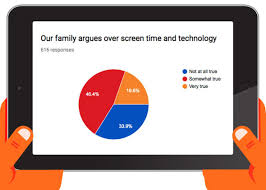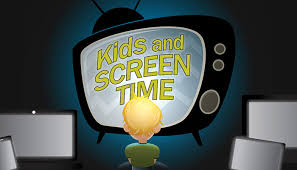As an 11-year-old back in 2008, getting a Nokia brick phone with a 2cm by 2cm screen that let me play cricket and sudoku was quite possibly one of the coolest things that could have ever happened to me. Could technology get any better? Fast forward to almost decade later, and now I can download as many games as my iPhone storage can muster, Instagram my cliche boomerangs to my heart’s content and snapchat my friends whenever and wherever I want to.
Though I hate to admit it, even I get carried away sometimes with the amount I rely on my phone and how much screen time I’m getting throughout my day. From finding my way around, communicating, waking me up in the morning, there is quite simply nothing that my trusty phone can’t help me with. And yes, how much more convenient is my life? So much more. Or have I gotten so used to the convenience of it all that somewhere down the line I let myself get to the point where I can’t leave the house without my phone with me?

How much screen time is too much? And how do you make sure that you and your loved ones are finding the balance between utilising a convenient tool and making your smartphone the pillar of your existence?
With regard to how much screen time is appropriate and how it can negatively impact us in the long term, the truth is that the verdict may not be out on that yet. And that is the difficulty of it, all of the technology we surround ourselves with us now is so new and recent we haven’t been able to have the time to figure out what it really can do.
Whilst the final verdict on how screen time can affect us is not out quite yet. What we do know is this, prolonged screen time means that we are spending more and more time remaining sedentary. And we do know what sedentary behaviour does to us.
The Sydney Children’s Hospital Network reports that health professionals are starting to see how it’s beginning to change us, and especially our children. They cite that the more time children are spending on screens, the less time they are spending getting physical activity and this carries ramifications which can last a lifetime. NSW Health recommends that for children aged between 5 to 18 years old should be getting at least 60 minutes of moderate to vigorous exercise a day. Moreover, they warn that sedentary activity should be limited to 2 hours each day. With NSW Health reporting that 89% of children aged between 4 and 5 years are spending more than 2 hours on their screens, you can see where there is room for improvement.
Not only does the social phenomenon of increased screen time taking a physical toll on the health and development of our youngsters, we are also starting to see that there are social consequences as well. The Queensland government has also suggested that with excess screen time, youths can experience social isolation, disruption in their concentration and ‘risk-taking’ behaviour can increase. They also identify that social media poses a threat of exposing teens to dangerous content and facilitate the development of psychologically damaging habits and traits, causing an impact for years to come. And the longer term effects of these habits have perhaps manifested themselves in the data published by Sensis in their 2018 Yellow Social Media Report finding that 19% of social media users were habitually on social media sites whilst eating with other people, with age group 30 -39-year-olds being the largest group to be participating in this habit.
To create better habits or getting out of some nasty screen time habits, families may perhaps find establishing guidelines and rules for screen time exposure and usage. The necessity of this is especially highlighted in the survey result published by the Australian Psychology Society when parents were asked if they monitor their child’s social media use in the past year 60% of parents answered that they never monitor their children. Now when we think of monitoring screen time, 2 hours per day is the golden rule established by the government. But it is not only the ‘how long’ we should be careful of. It is important that parents know that how and what is being accessed also has a significant impact on children and youth.
When we attempt to monitor our diet, it is not simply when or how much we are eating that is important for both our psychological and physical wellbeing, it is crucial to remember that what we are putting in our mouths matters just as much. And it should be the exact same for screen time. For so long we have been saying that we need to curve the amount of time we spend in front of screens but not only this, what we are accessing during our screentime is paramount to the effect it has on us too. For example, spending 2 hours skyping your family or friends overseas or watching an educational program can carry vastly different impacts to being exposed to materials such as shows or games which may contain harmful contents like self-harm or violence.
Our almost singular focus on the amount of time we spend in front of a screen rather than what we do during that time is reflected in the research that has been carried out. In 2017, a group of scientists wrote an open letter on the Guardian about the significance of shifting our focus from the arbitrary concept of ‘screentime’ to the ‘context’ and ‘content’ that children are being exposed to. They also pointed out that with enough research not being conducted on the impact of these specific uses of ‘screentime’, guidelines implemented by governments may not be as effective as they are unfounded without the proper investigations being conducted.
With the verdict not yet out on how we, not just children, are being impacted by screen time, it is fundamental to acknowledge and remind ourselves that the kind of content being accessed should also be something we begin to screen for children and youth. This is not to say that my mum is now allowed to go through every single direct message on my Instagram, but open communication and sharing within the household should be encouraged and facilitated. Although screen time and social media can be given a bad wrap sometimes, it is definitely important to remember that when used right it is something that can connect us, educate us and empower us. And it is time that as a society we learn how to better harness this magical tool to our benefit rather than our demise.
Article was written by Sola Ogata
References:
https://www.schn.health.nsw.gov.au/fact-sheets/screen-time-and-children
https://www-nature-com.ezproxy1.library.usyd.edu.au/articles/s41562-018-0506-1

